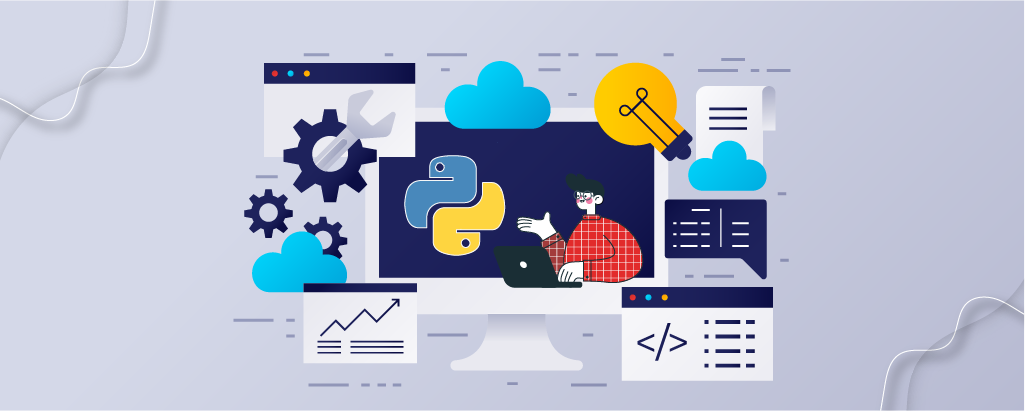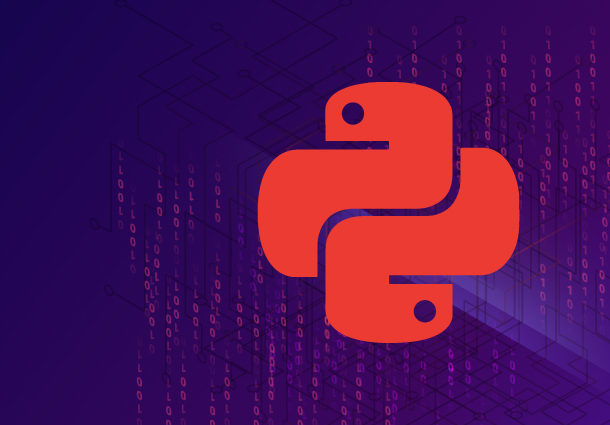From Fundamental Concepts to Advanced Techniques; Emitting Python Backend Development
When it comes to backend programming, Python is a powerful tool that combines simplicity, versatility, and efficiency. Developers may break through conventional constraints, unleash creativity, and create durable backend architectures that propel apps to success in the ever-changing digital ecosystem of today by embracing Python backend development’s potential. Become one of the forward-thinking developers who are utilizing Python’s power to create the backend frameworks for the revolutionary apps of the future.
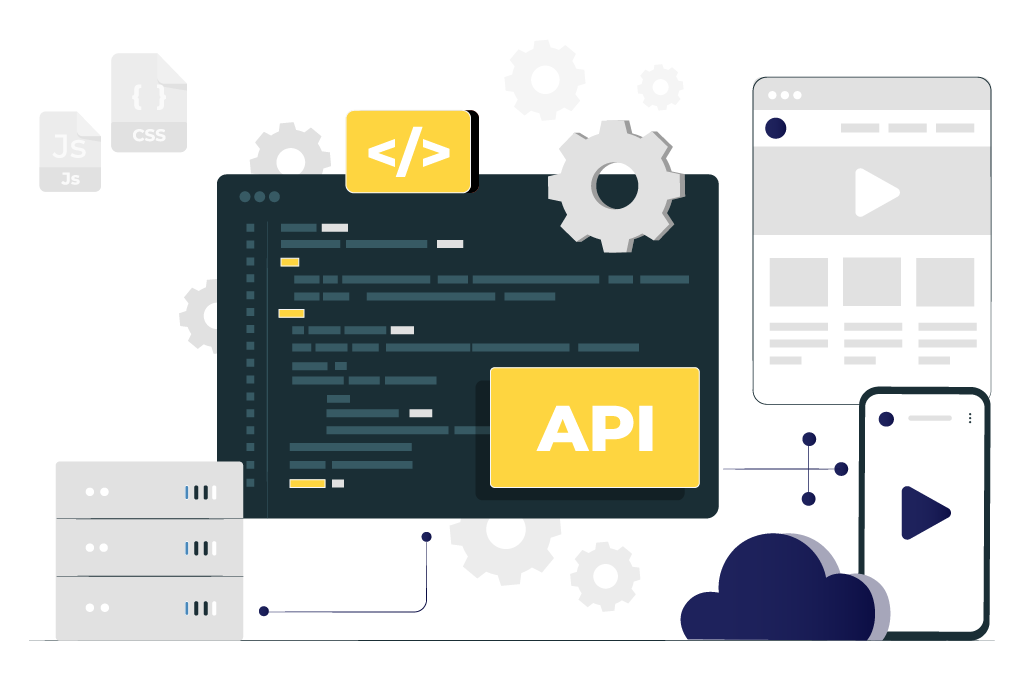
Exploring Python’s possibilities, we learn how it can improve scalability, manage resource usage, and streamline backend processes—all of which help to build robust and efficient applications. Through our exploration of the complexities of Python backend programming, we will discover how to use Python backend frameworks such as Django and Flask to accelerate development cycles and produce feature-rich apps with little work. You’ll be able to create backend solutions that are more inventive and flexible and that satisfy the changing needs of contemporary apps when you choose Python as your ally.
So, let’s discover the world of Python backend development, where creativity and efficiency come together to strengthen applications with smooth operation and reliable performance and take a transforming journey there. Developers or business persons can grasp Python’s backend capabilities with the help of this thorough guide, which covers everything from basic concepts to sophisticated methods, giving you the knowledge and skills you need to create complex solutions. Python’s adaptability and agility in powering backend infrastructures will be highlighted as we examine the critical role that effective backend development plays in contemporary applications. This guide offers a comprehensive view of Python backend development, suitable for both experienced developers seeking to hone their abilities and beginners wanting to learn the fundamentals.
Fashioning Python Backend Milieu by Establishing the Foundation for Seamless Development
To ensure effective application development and deployment, there are numerous essential tasks involved in setting up an ideal Python backend environment. To begin with, backend developers must install and configure Python. Installing the Python interpreter and any other project-specific packages or libraries falls under this category. Additionally, developing scalable and reliable backend systems depends on selecting the appropriate framework. Well-known frameworks like Django and Flask are excellent options for a variety of web applications since they have strong features and strong community support.
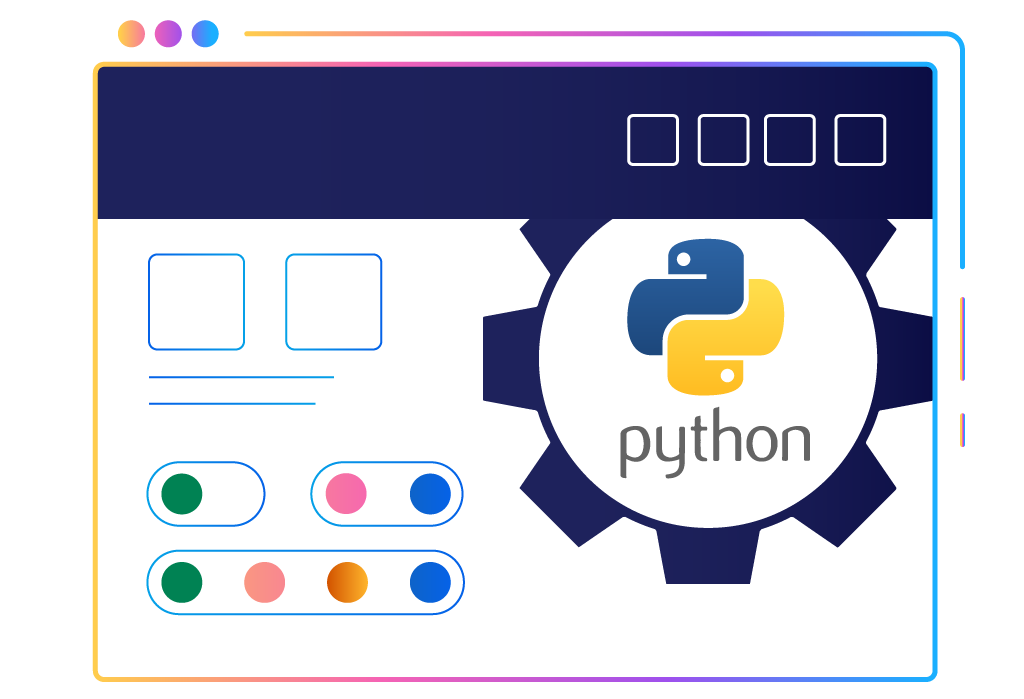
Developers should create a virtual environment to separate project requirements after setting up the best Python for backend. With virtual environments, developers may set up isolated environments specifically for each project, avoiding dependencies from clashing and guaranteeing uniform development environments on many workstations. When cooperating with other developers or working on several projects at once, this technique is quite helpful.
Once the virtual environment and Python environment are configured, developers must choose the right tools and utilities to improve their workflow. This could involve continuous integration and deployment pipelines to expedite the deployment process, automated testing frameworks to guarantee code quality, and version control systems like Git to manage code changes.
Maintaining and scaling code can be enhanced by implementing best practices including documentation, code refactoring, and code reviews. Frequent code reviews guarantee adherence to coding standards and assist uncover possible problems, and thorough documentation guarantees that developers can comprehend the project and contribute to it successfully. Periodic code restructuring also lowers technical debt and boosts overall development efficiency by keeping the codebase organized and manageable.
Developers can establish a stable Python for backend environment that supports the creation of scalable, dependable, and maintainable applications by adhering to these guidelines and best practices. Whether creating web services, APIs, or other backend systems, a properly set Python environment is essential for both long-term maintainability and successful project execution.
Machinating APIs with Python and Acumenating RESTful Development and Security Protocols
Python is a necessary tool for developing reliable APIs in today’s web and application development landscape. Python is a great option for developing APIs that can effectively perform a variety of tasks because of its flexibility and ease of use. Using frameworks like Flask or Django, Python developers may construct RESTful APIs, offering a standardized method for developing APIs that successfully interface with client applications.
Gaining a basic understanding of Python for backend is essential for developing APIs. The foundations of API architecture, such as endpoint structure, HTTP methods, and request/response formats, must be understood by developers. Python’s copious documentation and abundant community resources facilitate the acquisition of these concepts by developers and their successful integration into projects.
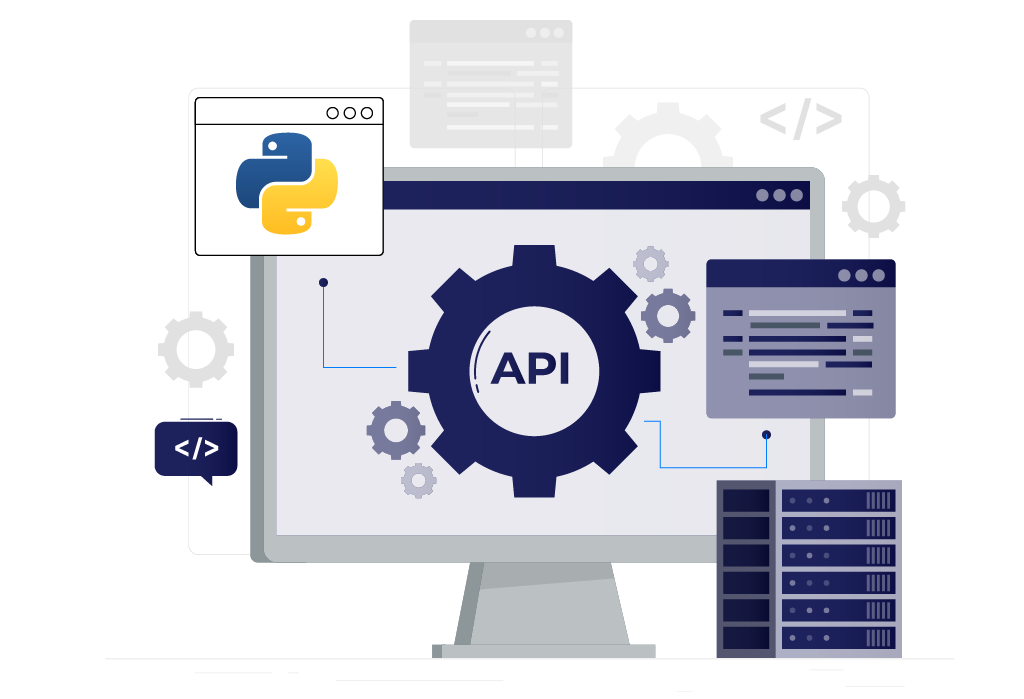
Developers can begin creating RESTful APIs with well-known Python frameworks like Flask or Django after they have a firm grasp of API design principles. The process of developing an API is facilitated by these frameworks, which include strong tools and libraries for managing HTTP requests, routing, serialization, and authentication. Moreover, many frameworks provide pre-built assistance for typical tasks like session management, database integration, and security, freeing developers to concentrate on putting business logic into practice rather than having to start from scratch.
Development of APIs requires authentication and permission to guarantee that only authorized users can access resources that are protected. Developers can select the best authentication strategy for their application’s security needs from a variety of options provided by Python frameworks like Flask and Django, which include token-based authentication, OAuth, and JWT. Developers can improve the security of their APIs and keep sensitive data safe from unwanted access by putting strong authentication and permission procedures in place.
Python gives programmers strong frameworks and tools to create reliable APIs, which are the foundation of contemporary web and application development. Developers may construct secure, scalable, and effective APIs by grasping the concepts of RESTful programming, utilizing well-known Python frameworks, and putting safe authentication and authorization procedures in place. Because of Python’s adaptability and agility, developers can use it to create applications that provide amazing user experiences and open up new possibilities for their projects.
Efficient Data Handling and Database Integration with Python Backend
Python backend web development programming requires effective data handling and database integration to facilitate smooth communication between apps and the underlying data stores. To store and retrieve data effectively, a safe and dependable connection must be established between the Python backend and the databases. By encapsulating database interactions into Python objects and improving code readability and maintainability, object-relational mappers, or ORMs, are essential for streamlining data manipulation.
Developers may easily connect with both SQL and NoSQL databases by using ORMs like SQLAlchemy in Python, which makes it easier to implement CRUD (Create, Read, Update, Delete) operations. Developers may execute complicated queries and transactions with SQL databases, guaranteeing optimal performance and data consistency, by utilizing SQL Alchemy’s robust features. In the meantime, flexibility in managing unstructured or semi-structured data is provided by integration with NoSQL databases, meeting the needs of many application scenarios.
Using SQL or NoSQL databases to implement CRUD activities in Python enables developers to create scalable, resilient backend systems that can effectively handle massive amounts of data. Through the utilization of Python’s abundant database modules and frameworks, developers may optimize the development process, minimize time-to-market, and produce high-performing applications customized to satisfy changing business requirements.
The cornerstones of Python backend development are effective data processing and database integration, which allow programmers to create dependable, scalable, and high-performing applications. Through the utilization of Python’s adaptability and an abundance of database modules and frameworks, developers can optimize the development process and uncover novel avenues for creativity in backend development.
Maximizing Efficiency and Scaling by Amplifying Python Backend Performance
For seamless and effective operations, performance optimization and application scalability are critical in the field of Python backend development. Performance improvement of Python backend web development can be achieved using a variety of tactics, such as caching systems, effective database queries, and code optimization. By putting these strategies into practice, developers may greatly enhance the speed and responsiveness of their apps, which will enhance user satisfaction and improve the user experience.
Managing increasing user demands through workload distribution across several servers and instances is the process of scaling Python programs. By distributing incoming traffic evenly, load balancing techniques assist keep servers from overloading any one of them. Furthermore, caching data that is frequently accessed might better application performance overall by lightening the strain on backend servers.
When it comes to locating and fixing performance bottlenecks in Python backend applications, monitoring and debugging tools are essential. These tools offer insights into parameters related to application performance, including error rates, resource usage, and response times. Developers can identify areas for improvement and optimize their code accordingly by evaluating these numbers.
Enhancing efficiency and expanding Delivering responsive and high-quality online services requires Python backend apps. Through the utilization of strategies like load balancing, code optimization, and monitoring tools, developers can guarantee that their programs satisfy the needs of contemporary consumers and offer a smooth user experience.
Procure Python’s Backend Potential by Opting Pattem Digital
With Pattem Digital, realize all of Python’s potential for backend programming. Our skilled staff makes use of Python’s features to create dependable, scalable, and effective backend systems that are customized to your particular company’s requirements. With our in-depth knowledge of backend programming and proficiency with Python frameworks, we guarantee that your apps have the newest features, smooth operation, and maximum scalability. Put your trust in Pattem Digital to use the versatility and dependability of Python web development services for your projects.
